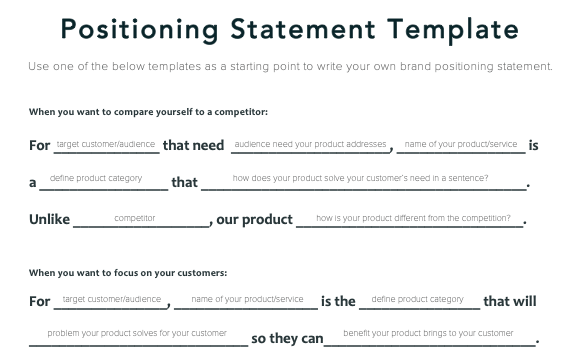How To Create a Successful Brand Strategy in 7 Steps
A brand strategy is a comprehensive approach to creating a strong and positive connection with customers and potential customers. It involves various elements such as the brand voice, storytelling, brand identity, values, and overall branding. It aligns your long-term business goals and objectives with your brand’s overall image and perception and outlines the steps and […]
Jul 23, 2023






A brand strategy is a comprehensive approach to creating a strong and positive connection with customers and potential customers. It involves various elements such as the brand voice, storytelling, brand identity, values, and overall branding.
It aligns your long-term business goals and objectives with your brand’s overall image and perception and outlines the steps and actions needed to achieve those goals. It is a blueprint that guides the development and evolution of your brand, determining your target audience and where you want to take your business in the future.
Here are 7 steps you can follow to create a comprehensive brand strategy.
Step 1 – Dive in on research on your target audience
Before you can create a brand strategy, you need to understand who your target audience is. Your target audience is the group of people who are most likely to purchase your products or services. Consider factors like demographics, psychographics, and behaviour patterns when defining your target audience. Your existing customers are perfect for researching what your target audience should be like.
To learn more about your current customers’ experiences, you can distribute customer satisfaction surveys to them. Alternatively, you can also collect data from the sales team since they deal with customers every day.
Step 2 – Develop your Unique Selling Point (USP)
A unique selling point or USP is a special trait or advantage that distinguishes a product or service from its competitors. It is an essential component of a brand’s strategy because it aids in differentiating the brand and conveying its value to prospective customers.
A brand can develop a captivating message that connects with its target audience and positions itself favourably in the market by finding and emphasising on its USP.
This can help to attract and retain customers, increase brand awareness, and build a loyal customer base. In addition, a USP can be used to guide the development of a brand’s pricing, marketing, and product strategies. To identify your USP, here are some questions you can consider:
- What problem does your product or service solve for your target audience?
- How is your product or service different from or better than your competitors?
- What are the key benefits of your product or service?
Step 3 – Develop your brand positioning
Your brand positioning statement lays the groundwork for your brand strategy by explaining your USP to your target audience. It should be succinct and highlight your product’s or service’s key benefits. With a good brand positioning statement, your brand is heard and seen clearly rather than shouting at an uninterested crowd or an empty space. A positioning statement encapsulates the essence of your brand positioning and is typically three to five sentences long.
Given that you will be expected to follow through on your promises, it must be realistic and achievable.


One good example of a brand positioning statement would be Nike, “At Nike, we’re committed to creating a better, more sustainable future for our people, planet and communities through the power of sport.”. Nike’s positioning statement emphasises its goal of fusing innovation and sustainability into its activewear and its dedication to helping athletes overcome obstacles.
Here is a guide for you to develop your brand position statement.
Step 4 – Creating a brand personality
Brand personality is crucial to the development or positioning of a brand. It is important for successful differentiation and can be crucial in markets with comparable products or services. Customers make decisions based on their emotions and liking since they buy products on an emotional level. It humanises your brand and helps forge an emotional bond with your target market. Take into account the following questions when developing a brand personality:
- What key qualities best describe your brand?
- What are the core beliefs and values of your brand?
- What impression do you want your brand to make on your target audience?
Step 5 – Develop your visual identity
The visual elements of your brand, such as your logo, colour scheme, and typography, collectively make up your visual identity. It should reflect your brand identity and be consistent across all of your marketing materials. Many brands do not need to change their name. A name change could be necessary if you are a new brand, are merging, or are stuck with a name that no longer fits your positioning. A fresh branding of the logo and slogan could be beneficial even if you do not wish to change your company name to better match your brand strategy.
For example, Giant had a makeover with a new logo a while back. They changed their typography and its signature green and yellow to lime green. The unveiling of the new logo aligns with Giant’s thorough rebranding of all 53 of its stores in Singapore.
More than two thousand new products and a new bakery concept called Dollar Zone have been added to the stores, giving them colour and warmth. This change is the outcome of Giant’s research into what their customers feel matters most – which are both a satisfying shopping experience and fresh, high-quality products at a great value.
As you create your visual identity, take these things into account:
- Do a research on colours psychology
- Pick colours that are reflective of your brand personality.
- Use legible and consistent typography.
- Think about integrating motifs or pictures that represent your brand


Step 6 – Develop your messaging strategy
A message presented to the target audience regarding a brand, product, or service must be concise, consistent, and captivating. A successful brand strategy should have a specific goal, stand out from the competitors, be personalised to the needs of a particular audience, and tell the brand’s story at every stage of the customer journey. For example, Apple’s brand position is to bring out the best in each and every one. Therefore, their messaging strategy is to be genuine, intimate and non-technical. When they are trying to talk about gigabytes, their message is “Lose Yourself in 50 Million Songs”.


Step 7 – Put your brand strategy into action
Finally, it is time to implement your brand strategy. All of your marketing initiatives must reflect your brand’s positioning, personality, and visual identity. This means your website, social media accounts, marketing materials, and even packaging. Additionally, it is important to hold a briefing to ensure that everyone on your team is aware and aligns with your brand strategy.
In conclusion
It is imperative to assess the success of your brand strategy and make any necessary adjustments along the way. This entails monitoring important data including sales, social media engagement, and website traffic. Likewise, it also means having to stay updated with your current industry’s trends and adjust your brand strategy whenever necessary.
















